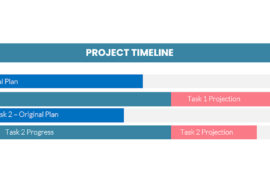 It’s the path of least resistance that is the root of most problems with implementing enterprise project systems. You no doubt have heard the term. It’s commonly used to describe the path water will take if put on an uneven surface. Water will always flow down the path of least resistance, forever taking the easy way to lower altitudes
It’s the path of least resistance that is the root of most problems with implementing enterprise project systems. You no doubt have heard the term. It’s commonly used to describe the path water will take if put on an uneven surface. Water will always flow down the path of least resistance, forever taking the easy way to lower altitudes
In the world of project management systems, the term is an easy analogy to adopt if you start to look at enterprise systems. If you’re just looking at a desktop scheduling tool then this whole notion may not play such a key role. In this case, an individual might be willing to tackle a path that is quite difficult including a steep and high learning curve, software which is not simple to install or use and a process which must be defined by the user. An individual might take on such a system in the interests of furthering long term goals of either the company or him/herself.
But what hold true for an individual often does not work for a group. I’ve seen more and more organizations this year striving towards an enterprise project control system. Sometimes the project is underestimated (Ok, almost always) and sometimes the project has many cultural hurdles to overcome (Alright virtually always) but one obstacle that seems to virtually always appear is often not identified as a problem at all and that’s the tendency of people to follow the path of least resistance.
I’ve come across it several times in just the last month. In a huge insurance company based in the US, they have been striving for a common project management system for over a year (at least publicly – They’ve probably been trying to decide on such a system since the company was founded!).
This year I was peripherally involved in the selection process. Fundamental to this process was that a single product would be chosen. Over 300 people were canvassed as part of the due diligence process. “We didn’t want anyone to feel left out,” said one senior committee member. “We need universal buy-in.”
After almost 16 months of sometimes intense internal negotiation, they have now told the 3 product finalists that the “standard” project management tool that will be chosen must be able to integrate fully with Microsoft Project as it will continue to be used by project managers across the company whenever they feel the need is warranted.
Now, I’m on record as saying that I like Microsoft Project just fine but it must be obvious to you that choosing a “multiple-product standard” is an oxymoron.
How can an organization take two products; one a desktop planning tool, the other a high-end enterprise project control tool and make them an integrated project management system for the entire enterprise? Well, they can’t. Oh, you can declare that such a system is now your enterprise project environment but that doesn’t make it integrated.
The problem is that different people have different needs. It might be better in the long term for the organization to work with a complex but extensive project management system but end-users who don’t see a direct benefit to them won’t adopt it. They will follow the path of least resistance; choosing a system which can return them results instantly. Full-time professional project schedulers see their path differently. As an individual who is often asked for reports and analysis, they might find the path of least resistance to be in a high-end system with a lot of flexibility.
So, will this company implement an enterprise project management system? Not this year.
I’ve seen the same phenomenon at the management level. This month, while advising a multi-national pharmaceutical company, I watched a senior executive follow the path of least resistance into a no-win situation.
In this firm, the senior executive in a research group, created a committee to select an enterprise project tool. It started off with a great deal of momentum and lofty ideals. But, as many committees do, over time, the diverse interests of this group started to show through. The selection process should have been complete in a few short months. Instead, some 18 months later, it’s now more mired in controversy than ever.
The senior executive, has had several opportunities to move the process forward at the risk of upsetting some of the committee members but he won’t. He takes instead, the path of least resistance. He has always managed through consensus. His theory, is that everyone just stays in one room long enough, eventually they’ll come to the same conclusion. The underlying assumption of this theory is that there is common ground to be found somewhere. The problem is, there are different kinds of tools appropriate to different kinds of users. Consequently, the longer the committee struggles, the more each diverse interest is attracted to a different kind of tool. Without the intervention of someone senior in the process the committee has no hope of success.
So, is there any defense against the path of least resistance? There is. The two best weapons against the dangers of following the easy road into trouble are commitment and structure.
Commitment is the tougher of the two and is most likely to be seen at the executive level. If you know that you or a committee or group you are sponsoring may be enticed down the garden path of least resistance, you can keep them productive by committing to a goal that goes beyond what is easy. Kennedy did it when he committed to send a man to the moon before the end of the 60’s. When he consulted the project managers they said that the project was impossible in that time frame. But his commitment had inspired the country and many men and women toiled to make the commitment a reality even against tremendous opposition and adversity.
If you’re not the President yet you still want to make an impact in this area, you can do so with the second great weapon; structure. Even the lowliest project system selection committee member can introduce structure into the selection process. Structure can usually be introduced at low stress without offending anyone from any faction.
Once the structure has been agreed to, it becomes a powerful backdrop against which to move the process forward. It may be one of the few elements of the group’s entire history on which everyone was able to agree and thus it can become a focal point for progress together.
Whichever method of combating it you choose, don’t discount the insidious effects of following the path of least resistance. Remember this Chinese proverb – if you don’t change your path, you are liable to end up where you are headed!




